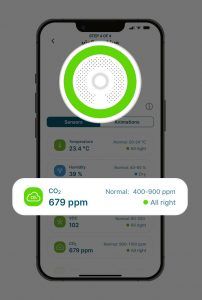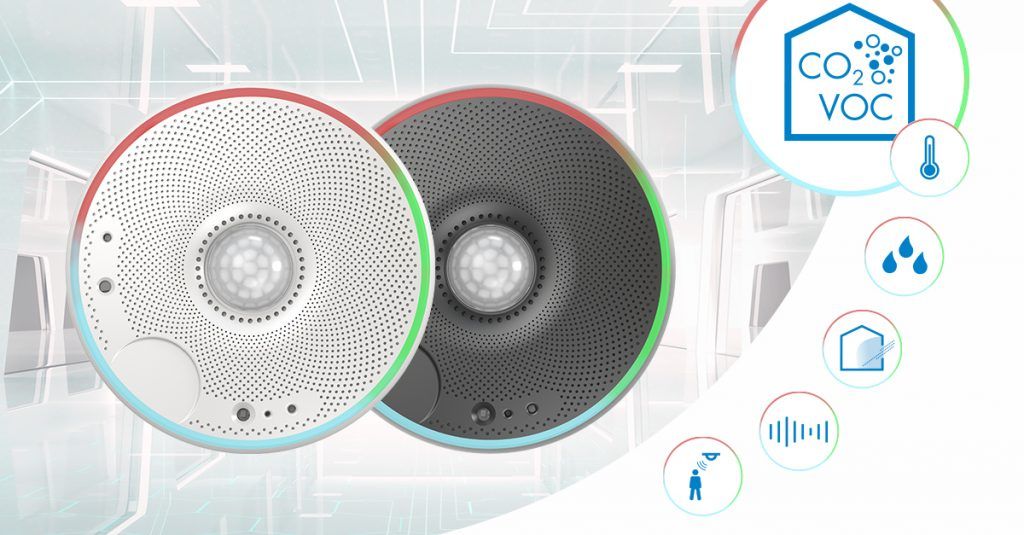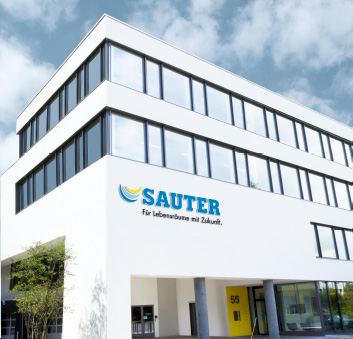Smart Sensor viaSens now with CO2 sensor
Smart Sensor viaSens now with CO2 sensor
Continuous monitoring of room air quality is becoming the standard way to ensure healthy and pleasant indoor spaces. SAUTER has now provided the Smart Sensor viaSens with a CO2 sensor to complete the mix of sensors for VOC, temperature, humidity, brightness, presence and sound level.
With increasing awareness of air quality and energy efficiency, monitoring of carbon dioxide concentrations in indoor areas is taking on a key role. The main strategy for reducing indoor CO2 levels is ventilation with fresh outside air. Mechanical ventilation systems and filtration technologies are another way to reduce CO2 and other harmful air pollutants. These measures are crucial to the health and performance of the people in the rooms.
High-quality solution for integrated room automation
CO2 sensors enable demand-led mechanical ventilation that ensures healthy indoor air quality (IAQ) while preventing overventilation. The Smart Sensor viaSens from SAUTER is a true all-rounder. It combines real-time monitoring of VOC, temperature, humidity, brightness, presence and sound level, and now also CO2 (type FMS117 / FMS197) in a single device. The photoacoustic NDIR measuring method makes the CO2 sensor particularly robust and enables miniaturisation.
The viaSens smart sensor also has an animated LED ring, Bluetooth and MQTT and can be optimally integrated into the SAUTER ecos room automation system. It can be used anywhere and meets all the requirements for a precise measuring system such as long-term and temperature stability, fast measuring and reaction times and long-term reliability.

Guaranteed energy efficiency
Continuous CO2 monitoring in individual rooms is becoming the standard way to ensure healthy and pleasant indoor air. As an added bonus, it also provides economic benefits. With demand-led ventilation, the air quantity can be reduced by 20% and the electric drive power by almost 50%. This leveraging effect means it quickly pays off to equip the automated ventilation system with presence and CO2 sensors. According to VDMA 24773, in various types of building the use of sensors can produce savings of up to 70%.
The Smart Sensor viaSens type FMS117 (node) and FMS197 (IoT gateway) is now available.
For more information, go to www.sautersmartsensor.com
About SAUTER
New building, refurbishment or building operation – SAUTER is your reliable partner for sustainability, operational safety and comfort of real estate. With our intelligent solutions for building control, room automation and technical facility management, we safeguard your investment and support you in achieving your ESG goals. We create sustainable environments. Since 1910.
The SAUTER Group
- Global company headquartered in Basel, Switzerland
- Technology leader in the field of building automation, system integration and building services
- Focus: maximum energy efficiency and sustainability
- Goal: investment and operational safety throughout the entire building life cycle
- Member of the BACnet Interest Group (BIG-EU), BACnet International, EnOcean Alliance as well as the bac, KNX and DALI Alliance (DiiA)


